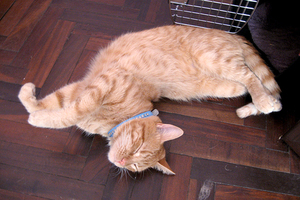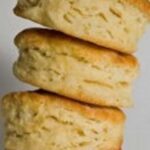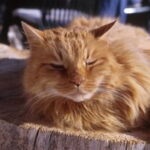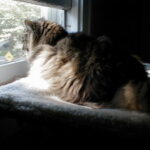I’ve always had both cats and dogs and love them for their different and unique behaviors. Cats are intriguing creatures and one thing I’ve always loved about felines is how they show us their love. It’s a misconception cats are aloof and independent. Felines are just as loving and loyal as dogs. They just show us in a different way. Cats need attention just like dogs and one way they show affection is by making biscuits on us or with each other. Kneading is a behavior unique to our domesticated feline friends, as well as big cats.
Kneading is a behavior all cats do, young and old. Scientists are still at a loss as to why cats make the pushing, alternating motion with their paws. It’s a lifelong behavior all cats do beginning right after birth. I have some cats that curl up next to me in bed and make biscuits with their front and back paws and others that only use their front paws. It can be down right painful sometimes, but it says your cat is happy and contented so those little pinpricks left in your arm or leg are a sign of how much your cat loves you. Although, some cats are nice and keep their claws pulled in while kneading.
Making biscuits is an instinctive behavior all cats, big and small, share and it’s a mystery scientists are still trying to unravel. Although, they do have a few theories. Newborn kittens knead their mother’s tummy around her nipples to help stimulate milk flow so they can nurse. It’s possible, kneading stays with cats their entire life because of the milk reward they received as kittens, along with the security and comfortable feelings they felt when snuggled next to their mom. However, kittens that have been hand raised from birth knead, as well.
In the wild, dogs and cats, including the big cats, don’t have nice soft beds to curl up in when they want to take a nap. There’s no human to provide a safe nesting area when it’s time to give birth. It’s possible cats knead because that’s how they flatten tall grass to make a softer bed for them to lie on. Pawing and scratching the ground may be one way of driving small insects and snakes out of an area, thereby making the nest a safer place to sleep and raise their young. If you pay attention to your cat, kneading is something some cats do before lying down to sleep.
Another theory is that kneading is a way of leaving their mark on objects or people they consider to be theirs. Cats are territorial and mark what they want to claim with scent glands on their legs, the sides of the face, and on the pads of their feet. Wild and domesticated cats leave urine markings as signposts to other cats as a way of marking their territory, as well as leaving their scent by rubbing against trees, rolling on the ground, or kneading their owner. So I suppose we should be happy we are marked by scent glands on their feet or face rather than another way they could claim us as theirs. If your cat loves to sit on your lap, or curl up next to you in bed and make biscuits on you, that’s a compliment and she’s saying, you belong to her.
Kneading is an obvious pleasure for cats and it’s usually accompanied with soft purring and sometimes drooling as some cats become more relaxed. A happy feline may make biscuits on your pillow, a comforter/blanket, on another cat, dog, or you. Some cats knead the air while they’re lying on their back, some stand in front of their food or water bowl and need the ground, and some make biscuits while you talk to them.
I have no problem with my cats wanting to claim me, but their loving claws can hurt. One trick I use to redirect sharp claws is to gently scratch in between the pads of their feet with my finger. Most cats will spread their paws to allow you more room to tickle their feet and it helps slow down the kneading on your leg or other areas of your body. Gently holding their paws in your hand can also allow you to move their paws from you to the bed or couch. You can put a blanket or towel between you and your cat’s claws. Don’t be afraid to clip the ends of your cat’s claws to help dull the sharp points and never punish your cat for kneading or doing any behavior that’s natural to them.
Scientists may only have theories as to why cats knead, but since it’s usually accompanied with purring, that says your cat is happy and if making biscuits makes my cats happy, I’ll gladly endure a little pain when they want to let me know I belong to them.
The Cost of Letting Your Cat Outside
How to Protect Small Pets From Birds of Prey
The Strategy Behind How Cats Attack Prey





